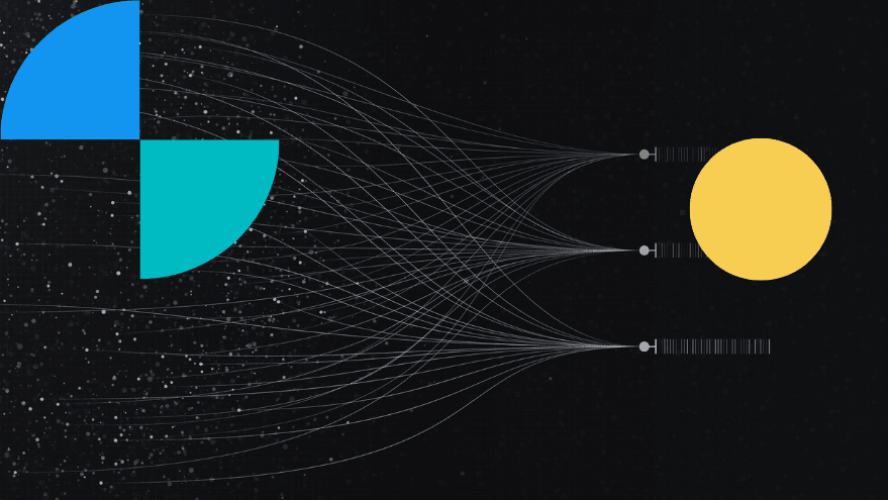Controlled circulation of data around any information system is nowadays crucial to correctly supply data to the business lines, applications and processes that are the beating heart of any company’s activities. In response to the multitude of data sources and the increasing complexity of information systems (expanding number of installed applications, hybrid architecture, more data flows, etc.), comprehensive supervision is essential. Such supervision is intended to maintain the good health of the IS, the backbone of business interchanges and a key source of process quality and efficiency.
The importance of data traffic within the information system
Data feeds the entire business and its functional teams, so problems they encounter during data routing and transformation can therefore quickly become critical to the organisation. Such problems might be the result of hardware faults (equipment failure, power cuts, etc.) or poor data processing (existence of duplicates, incomplete data, data quality suffering from successive user manipulations, transfers, transformations, etc.).
Data must not only flow seamlessly between all data producers and consumers (employees, applications, BI tools, data lakes, etc.), but its integrity must also be safeguarded. Using data of confirmed integrity contributes to the day-to-day performance of the business, and to that data’s compliance with any industry requirements.
It is consequently necessary to gain an overview of your IS by building a comprehensive picture of your data traffic. Having a 360° view of how data moves around your information system makes it possible to analyse the data lifecycle and data quality.
The re-engineering and supervision of data interchanges are consequently essential to identity mission-critical traffic and keep informed in real time of any actual or potential failures. By mapping data flows and standardising interchanges between applications, the organisation will be able to continue to gain the full benefit from its applications – both new and legacy – and optimise interchanges with the partner ecosystem.

How process (BPM) and data (ESB) integration can create value for IT and business departments ?
Data traffic supervision directly linked to the need for re-engineering
From the IT department to the C-suite, understanding data movements and the requirements of business processes are the keys to effective management. Information should be transmitted as soon as necessary, intact, to the consumers who need it. This approach is made even more complex by the increasing hybridisation of systems, in an attempt to reconcile cloud and on-site applications. Understanding the details of how your data traffic works and better orchestration of interchanges, are therefore essential to support any re-engineering process.
A number of solutions offer visibility over how data travels internally. Data flow diagrams in particular are a good introduction to supervision. There is also no shortage of solutions for re-engineering and data integration. As this subject has been discussed in previous articles (such as IS re-engineering and hybrid architecture, the remainder of this post will focus on data traffic supervision.
Data flow supervision does in fact entail the implementation of specific display, warning generation and volume analysis functions. In this way, the complete flow of traffic and data consumption trends are monitored. Operational management is based on indicators such as:
- The volume of data moving between applications
- The criticality of the data involved
- The number of applications involved in these interchanges
- The availability of these applications
- The data traffic response times.
These functions are supplemented by warnings and a dashboard, which help with preventive error resolution. The benefits are four-fold :
- Data traffic summary: the real-time summary view of data traffic offers transparency and control over interchanges at any time.
- Anticipation: supervision provides the tools to prioritise corrective measures and prevent irregularities becoming more serious.
- Responsiveness: acting quickly in response to problems helps to limit any data loss (and by extension financial loss), and improves the working conditions of employees in functional business areas.
- Productivity: timely data traffic management and error correction mean improved coordination of communication between applications, and strengthens users’ trust in their data.

ESB vs ETL ? The distinction between is no longer relevant relative to today’s business requirements.
Data Foundation, the Blueway platform for unified data traffic supervision
It is important to deal with all aspects of data in response to the challenge of monitoring data flows. Blueway’s Data Foundation solution accordingly allows you to perform every action needed on your data within a single platform, also providing supervision in the form of a native console.
Data Foundation handles data transformation and consumption rules, manages the data lifecycle and data quality assurance, monitors processing and analyses dependencies and impacts:
- Data collection: you collect all of your IS data (on-premise, private and public cloud, etc.), whatever the possibilities available (XML, web services, FTP, REST API and so on).
- Data consumption and transformation: you can perform all necessary processing within a graphics-based, low-code editor, including data transformation, transcoding and enrichment as well as application of functional rules.
- Distribution and exposure: data can be exposed securely within the IS under an SOA approach, or moved into defined target applications. All the entities in the information system can communicate synchronously or asynchronously.
- Overview and responsiveness: what processing is currently running? Has any failed, and if so, why? Comprehensive supervision of data traffic brings with it warnings and valuable information enabling failure points to be located rapidly.
The Data Foundation’s data supervision features are the outcome of Blueway’s wish to combine real-time and a 360o picture. The platform’s trigger system enables constant, proactive updating of your data traffic based on events, while adopting a long-term strategy for your information systems’ future development.
By combining Data Foundation with the process orchestration (BPM) and data centralisation (MDM) modules that fit with it so well, Blueway provides full control over every functional and technical aspect of data movement.

Want to discuss interoperability challenges with an expert?





